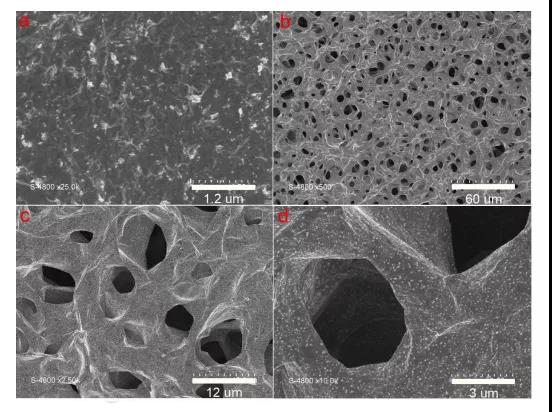Nano Energy: Modification of MXene
QQ Academic Group: 1092348845
Detailed
¡¾Research Background¡¿
With the advent of graphene, other two-dimensional materials (such as ¦Ä-MnO 2 , MoS 2 and MXene) have attracted the attention of the material science community. Compared with other carbonaceous materials, they provide unique ¡°planar¡± physical properties, and a large number of Chance of surface activation. Research has been conducted in many application fields including electrochemical energy storage. In corresponding devices, surface and edge defects contribute to charge storage. Therefore, the strong covalent bond in the plane between layers and the weak Van der Waals interaction outside the plane can be used to develop chemical strategies to provide or adjust other active sites. These processes are achieved through many chemical and physical methods, including stripping, intercalation, and hybridization. The main idea is to prevent the natural tendency of a single 2D layer to restack to minimize the surface energy, as in the original material. Through nanoscale chemical engineering, the association of 2D material layers with different chemical compositions and physical properties provides an excellent opportunity to take advantage of the resulting synergistic effects. Therefore, in the resulting composite, expanded, and mixed materials, the open 2D space between the layers can provide a "path" that is very suitable for ion adsorption and transmission.
¡¾Achievement Introduction¡¿
The research group of Professor Fr¨¦d¨¦ric Favier of the University of Montpellier in France published a research paper titled: Modifications of MXene Layers for Supercapacitors in the internationally renowned academic journal Nano Energy . The study used two different methods to prevent Ti 3 C 2 Re-stacking of T x -MXene layers: simple hard template method and hole formation method. Using MgO nanoparticles as a hard template to expand MXene shows an open morphology based on the corrugated layer. The corresponding electrode material exhibited a capacitance of 180 F g -1 at 1 A g -1 in 5000 charge-discharge cycles , and maintained 99% of its initial capacitance at 5 A g -1 . On the other hand, the MXene foam prepared after heating the MXene-urea composite at 550 ¡ã C showed many large pores and a complex open 3D internal structure on the surface layer. Due to this foam-like porous structure, the binder-free electrode based on the obtained MXene foam showed a large capacitance of 203 F g -1 at a current density of 5 A g -1 , and retained 99% after 5000 cycles. In contrast, the original MXene-based electrode provided only 82 F g -1 under the same operating conditions . The energy density of the asymmetric device constructed on the MXene foam negative electrode and the MnO 2 positive electrode is 16.5 Wh kg -1(Or 10 Wh L -1 ) and 160 W kg -1 (or 8.5 kW L -1 ) power density. The enhanced performance of these nano-engineered 2D materials strongly proves that the selected synthesis method can effectively solve the problem of MXene layer restacking.
¡¾Graphic introduction¡¿

Figure 1. Synthetic scheme for preparing various forms of MXene, as a heavy accumulation material after peeling (top), MXene expanded after heavy accumulation in the presence of MgO nanoparticles (middle) and MXene obtained by heat treatment in the presence of urea Foam (below)

Figure 2. XRD pattern of the corresponding material

Figure 3. SEM image of the side view

Figure 4. SEM images of the original MXene (a) and MXene foam (bd) surfaces

Figure 5. Electrochemical characteristics of binderless electrodes in a three-electrode device using 1 M KOH as electrolyte

Figure 6. Schematic diagram of ion migration in different electrode materials in supercapacitors

Figure 7. Electrochemical characteristics of symmetric MF // MF device

Figure 8. Electrochemical performance of asymmetric MF // MnO 2 device
¡¾Summary of this article¡¿
In order to solve the problem of the re-stacking of the peeled MXene layer, we successfully prepared and designed the expanded MXene and MXene foam materials by the hard template method and the pore forming method, respectively. As an electrode material, the binder-free MXene-based material shows high electrochemical performance in 1 M KOH, both in terms of specific capacitance, rate performance, and long-term cycling. When going from MXene to expanded MXene and MXene foam, the huge improvement is attributed to the morphological openings with larger interlayer spaces and pores that pass through the MXene layer to promote an increase in electroactive area and ion transport capability. MF is tested as the electrode material in the device. Symmetric MF // MF and asymmetric MF // MnO 2 devices have excellent rate performance and excellent cycle stability. In addition, MF // MnO 2 devices exhibit average energy densities of 16.5 Wh kg -1 and 10 Wh L -1 .
Literature link:
https://doi.org/10.1016/j.nanoen.2020.104734
Source:
- Previous£º AM Roundup: Applicatio
- Next£º Advanced Science | Vis


 mxene academic
mxene academic
